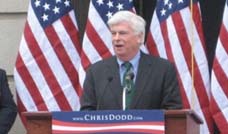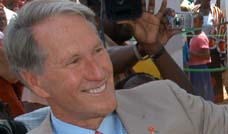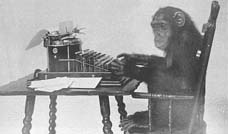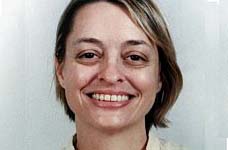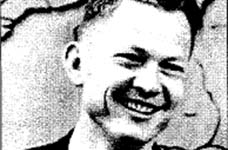
Smith's entire life is like one of her inventions, portable and off the grid. At 41, she has no kids, no car, no retirement plan and no desire for a Ph.D. Her official title: instructor. ''I'm doing exactly what I want to be doing. Why would I spend six years to get a Ph.D. to be in the position I'm in now, but with a title after my name? M.I.T. loves that I'm doing this work. The support is there. So I don't worry.'' It was a good thing that she won the Collegiate Inventors award in 1999, she says, because back then she was stretching a three-month graduate-student stipend to last for a year and didn't know how she'd pay her rent. The $7,500 prize came just in time. Likewise, the inventors who most inspire her will never strike it rich. ''There are geniuses in Africa, but they're not getting the press,'' she says. She gushes about Mohammed Bah Abba, a Nigerian teacher who came up with the pot-within-a-pot system. With nothing more than a big terra-cotta bowl, a little pot, some sand and water, Abba created a refrigerator -- the rig uses evaporation rather than electricity to keep vegetables cool. Innovations that target the poorest of the poor don't have to be complicated to make a big difference. The best solution is sometimes the most obvious. Smith, of course, aims to design such hidden-in-plain-sight tools and deliver them to the needy. But she also wants to change people's understanding of what it means to be an inventor. To this end, she is a co-founder of the Ideas (Innovation Development Enterprise Action) competition at M.I.T.; students work with a community partner to solve a problem for the disenfranchised. Last year's winners, for instance, included a team that developed a kit for removing land mines so that farmers in places like Zimbabwe no longer have to improvise with hoes and rakes. Success in the Ideas competition, as well as in the kind of design that Smith pursues, requires humility, because your masterpiece may end up looking like a bunch of rocks or a pile of sand. And since you'll be required to do extensive fieldwork to understand the problem you're solving, it also demands the skills of a crack Peace Corps volunteer, someone who remains cheerful even when the truck breaks down, the food runs out and you're the one who has to sleep next to the goat. Inventor Amy Smith teaches at the Massachusetts Institute of Technology and served as a Peace Corps Volunteer in Botswana.
Amy Smith's entire life is like one of her inventions, portable and off the grid
Necessity Is the Mother Of Invention
By PAGAN KENNEDY
November 30, 2003
Striding down a hallway at M.I.T., Amy Smith has a bucket in one hand and a length of string in the other. The brain behind such creations as the phase-change incubator, she is on her way to the Charles River to retrieve some dirty water for her next class. As she lopes along, Smith describes the ordeals of testing water in remote villages. Her words spurt out. She's a woman on fast-forward, and she does not so much talk as download information.
We reach the massive front doors of M.I.T.'s main building, and she pushes out into the crisp air and roar of traffic. Without interrupting her disquisition on water-testing, she perches sidesaddle on a banister. Elegantly poised, she slides down the handrail, still talking.
She lands on the sidewalk with a practiced leap. ''You slide faster in the winter,'' she says, ''when you've got a wool coat on.''
If you're an inventor and you ride the banister below the pillared entrance of a university, there's a good chance of coming off as way too cute, like Robin Williams playing an inventor in a Disney movie. But Smith can get away with this kind of flourish. She is, after all, one of the brightest minds in a movement that sets out to prove that the best technology can be cheap and simple. The banister is a perfect example: it requires less energy than the stairs, and it's free.
In a culture that hails mobile phones and plasma-screen televisions as the great innovations of our time, Smith is gloriously out of step. She designs medical devices and labor-saving machines for people who live at the far end of dirt roads in Africa. Her inventions cost anywhere from a few hundred dollars to a few pennies. ''You can't understand how important a grain mill is,'' she says, ''until you've spent three hours pounding grain and gotten a cup and a half of flour.'' It is this kind of understanding -- of tedium, of tired muscles, of hunger pangs -- that Smith brings to her work.
An hour later, in Smith's ''D-lab'' class, students gather around a huge, black-topped slab of a table. It's the first semester of design lab, and these undergrads are learning about the politics of delivering technology to poor nations, how to speak a little Creole and the nitty-gritty of mechanical engineering; during the midsemester break, they will travel to Haiti, Brazil or India. There, they will act as consultants in remote villages, helping locals solve technical problems. Oh, yes, and the students will also test village drinking water for dangerous bacteria.
Today, Smith is training them to do that. Using a small pump, the students draw the Charles River water through a filter. Smith points to a piece of the testing rig -- what looks like a silver barbell. ''This test stand costs $600,'' she says. ''Personally, I find that offensive.'' When the students work in the field, she says, they will be using a far cheaper setup -- one that she patched together herself for about $20, using a Playtex baby bottle. ''You can do a lot more testing for the same amount of money.''
Now the students have made cultures of Charles River water in petri dishes. The next step is to incubate the petri dishes for an entire day at a steady temperature. But how do you pull that off in a lean-to in Haiti, with no electricity for miles around? Again, Smith has a solution. She passes around a mesh bag of what appears to be white marbles. The ''marbles'' contain a chemical that, when heated and kept in an insulated environment, will stay at a steady 37 degrees Celsius for 24 hours. The balls are the crucial ingredient in one of Smith's inventions -- a phase-change incubator that requires no electricity. The design won her a 1999 Collegiate Inventors award. She says she hopes that the Centers for Disease Control and Prevention will soon endorse her incubator. ''From there it's not a big step to go to the Red Cross,'' she says. One day it could be a key piece of equipment at rural health clinics, where doctors depend on intermittent electricity or none at all. Smith has founded a company to handle the exigencies of getting her incubators up and running and out into the field. ''I have 6,000 of these balls on their way here from China as we speak,'' she says.
Now, Smith wants to demo a bacteria test in the dark. She asks a student to cut the lights. He flips a switch. For a moment, nothing happens, and then the room vibrates with a mechanical hum and panels close over a bank of skylights in the ceiling. All crane their necks to watch. The panels move in menacing slo-mo, like something out of a James Bond movie. A few people giggle, as if they have suddenly become aware of the contradictions thrumming in this room -- they've come to one of the best-financed technical institutes in the world to learn how to work with Playtex baby bottles.
A few weeks from now, Smith will give them one of their toughest lessons in the gaps between first world and third. The students will spend a week surviving on $2 a day in Cambridge -- the equivalent of what the average Haitian earns. Last year, Jamy Drouillard, who was a teacher's assistant for Smith's class, performed the assignment along with his students. Drouillard grew up in Haiti, but that didn't give him any special edge. He laughs, remembering his chief mistake. ''I bought a bunch of Ramen noodles, a packet of hotdogs, a bunch of spaghetti and some ketchup,'' he says. ''It got sickening after Day 3. Actually, before Day 3. I should have mixed and matched instead of buying five boxes of spaghetti. In Haiti, people come up with creative ways of varying their food intake.'' He said the assignment drove home Smith's point quickly: living at subsistence level requires enormous creativity. The African farmwoman who finds a way to make a scrap of land yield enough cassava root for her family is as much an inventor as any M.I.T.-trained engineer.
Last year, at an academic dinner with a plentiful buffet, Smith pulled out crackers from her pocket and nibbled while colleagues feasted around her; she was sticking to the $2-a-day assignment in fellowship with her students.
In the late 1980's, as a Peace Corps volunteer, Smith was stationed in Ghanzi, then a backwater of Botswana, down a dirt road that could take as long as three days to travel. ''Nobody wanted to live there,'' she says. ''You got sent there for punishment if you did badly in a job.''
Smith grew up in a comfortable, academic family. Her father taught electrical engineering at M.I.T.; her mother taught junior-high math. At the dinner table, the family would chitchat about ways to prove the Pythagorean theorem. In her first couple of years in the Peace Corps, she missed the kind of people she had known growing up in the orbit of M.I.T. -- people willing to engage, for instance, in passionate discussion about the innards of a motor. ''I'd run into development workers who had no clue about engineering. They wouldn't understand that there was a way you could solve a problem.''
In 1987, Smith returned home to Lexington, Mass., for her mother's funeral. Wandering through a supermarket after the service, she marveled at the lunacy of her own country: an entire aisle just for soup? It seemed impossible to bridge the gap between America and Botswana.
About a year later, Smith was gazing out the window of her room, studying the expanse of the Kalahari Desert pocked by thorn bushes. Suddenly, she says, she understood the arc of her life: she would learn how to be an engineer and bring her skills to a place like this. So she applied to graduate programs and ended up back at M.I.T. in 1990.
Sometime after she got there, a professor suggested that she try to solve a problem that bedevils people who live in rural Africa. It involves the hammer mill, a no-frills, motorized grain mill that women use to grind sorghum or millet into flour. The hammer mill can do a job in just a few minutes that might otherwise take hours, which makes it a hotly coveted item in developing nations. But there's a built-in flaw: the mill uses a wire-mesh screen. When that screen breaks, it cannot easily be replaced, because parts like that are scarce in Africa and not easy to fabricate. So for lack of a wire screen, grain mills often end up in the corner of a room, gathering dust.
What was needed was something that could not only match the efficiency of the hammer mill but also use materials available to a blacksmith in Senegal. A group of M.I.T. students had come up with some ideas, but Smith, who had ground sorghum by hand in Botswana, knew they weren't fast enough. So she devised a system based on an elegantly simple element: air. She redesigned the machine to use the air passing through the mill to separate particles. The smaller ones -- aka flour -- get carried out while the larger ones stay behind. The resulting machine would cost a quarter of what its predecessors had and use far less energy.
For her work as an inventor, including the screenless hammer mill, Smith became the first woman ever to win a Lemelson-M.I.T. Student Prize. Past recipients of the high-profile award for inventing include David Levy, who patented not only the smallest keypad in the world but also a surgical technique that speeds the splicing of severed blood vessels.
Smith's entire life is like one of her inventions, portable and off the grid. At 41, she has no kids, no car, no retirement plan and no desire for a Ph.D. Her official title: instructor. ''I'm doing exactly what I want to be doing. Why would I spend six years to get a Ph.D. to be in the position I'm in now, but with a title after my name? M.I.T. loves that I'm doing this work. The support is there. So I don't worry.'' It was a good thing that she won the Collegiate Inventors award in 1999, she says, because back then she was stretching a three-month graduate-student stipend to last for a year and didn't know how she'd pay her rent. The $7,500 prize came just in time.
Likewise, the inventors who most inspire her will never strike it rich. ''There are geniuses in Africa, but they're not getting the press,'' she says. She gushes about Mohammed Bah Abba, a Nigerian teacher who came up with the pot-within-a-pot system. With nothing more than a big terra-cotta bowl, a little pot, some sand and water, Abba created a refrigerator -- the rig uses evaporation rather than electricity to keep vegetables cool. Innovations that target the poorest of the poor don't have to be complicated to make a big difference. The best solution is sometimes the most obvious.
Smith, of course, aims to design such hidden-in-plain-sight tools and deliver them to the needy. But she also wants to change people's understanding of what it means to be an inventor. To this end, she is a co-founder of the Ideas (Innovation Development Enterprise Action) competition at M.I.T.; students work with a community partner to solve a problem for the disenfranchised. Last year's winners, for instance, included a team that developed a kit for removing land mines so that farmers in places like Zimbabwe no longer have to improvise with hoes and rakes.
Success in the Ideas competition, as well as in the kind of design that Smith pursues, requires humility, because your masterpiece may end up looking like a bunch of rocks or a pile of sand. And since you'll be required to do extensive fieldwork to understand the problem you're solving, it also demands the skills of a crack Peace Corps volunteer, someone who remains cheerful even when the truck breaks down, the food runs out and you're the one who has to sleep next to the goat.
Women have the advantage here, unlike other branches of engineering. ''I know how to be self-deprecating,'' Smith says. ''The traditional male engineer is not taught that way.'' That engineer, were he trying to figure out an agricultural problem in Botswana, might consult with men, but that wouldn't get him very far. ''In Africa, the women are the farmers. Women invented domesticated crops. If you're talking to the right people, they should be a group of elderly women with their hair up in bandannas.''
As improbable as it may sound, Smith's brand of invention is moving into the mainstream. That is because her clients -- the disenfranchised in Africa, Haiti, Brazil, India -- are increasingly able to secure loans. The concept of microfinance, which first took off in the 1970's in Bangladesh, has gathered force throughout the developing world, giving impoverished people the capital they need to start small businesses and buy materials. According to Elizabeth Littlefield of the Consultative Group to Assist the Poor, a microfinance group within the World Bank, the integration of tiny loan-making operations into mainstream banking could bring billions of new consumers into the global marketplace over the next few decades. There have already been some surprising strides made. In India, for example, banks have set up solar-powered kiosks in out-of-the-way villages, giving clients access to financial services in places where there is not even electricity. But what will they invest in? The rural poor will need machines designed for their needs. And that will, in turn, create demand for new kinds of technologies.
In a barbecue pit near the M.I.T. student center, pale blue smoke streams out of a trash can and twists in the direction of the tennis courts. It smells of caramel. Shawn Frayne, a gangly guy with a shock of black hair, sticks a lighter down into the can. He's trying to get a fire going. He holds up one of his finished products -- a piece of charcoal that looks like a jet-black hamburger patty. It's made out of the parts of the sugarcane that aren't edible -- that is, trash. These humble wads could help to solve a number of problems in Haiti: poor people would be able to make their own charcoal rather than having to pay for the prefab variety, forests would no longer have to be cut down to make wood charcoal and local entrepreneurs could use the recipe to set up small businesses.
Frayne graduated from M.I.T. last year. He didn't like school much, except for Smith's design class, to which he is so devoted that he volunteered to put finishing touches on several inventions the class started last year. ''I learned in an economics class that if someone has a good idea and they can implement it in a third-world country, they can dramatically change the economy of the country,'' Frayne says. ''I was surprised by how much technology can affect the well-being of a people.''
Smith herself stands by, trying to keep the wind from whipping her blond hair into her face. ''We're working on a portfolio of designs like this charcoal that we can show to the Peace Corps or to N.G.O.'s, groups that are trying to help people start up small businesses,'' she says.
Frayne ducks down, pointing to the base of the trash can. ''If we were in Haiti, we'd use dirt to seal up the bottom of the can,'' he says. ''But I couldn't find any dirt around here, so I used duct tape.''
Smith nods approvingly. ''In Cambridge, duct tape is the equivalent of dirt,'' she says. She loves duct tape and all it stands for. She knows how to make a hammock and a kaleidoscope out of duct tape. It's a very useful material, no doubt, but if she were on her $2-a-day budget, she'd probably have to buy it on layaway.
Pagan Kennedy is a frequent contributor to the magazine and last wrote about biodiesel fuel.
* Copyright 2007 The New York Times Company








